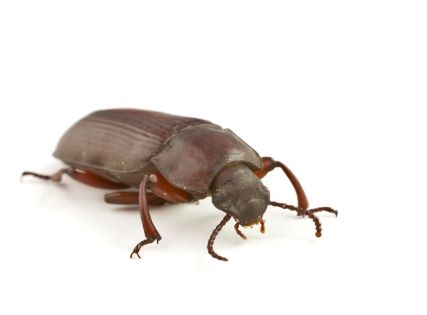
9 Tiny House Bugs – How to Identify & Get Rid Of These Little Invaders!
Are you tired of creepy bugs crawling in your house? Do you not know how to get rid of them?
Tiny house bugs are way more common than you think. They can be found in the cleanest of homes. Yet, there is no doubt that anyone can easily be “bugged” by this issue.
These tiny creepy-crawlers infestations can turn into a big concern if not taken care of at the right time. Here we will provide detailed information on how homeowners can identify and get rid of these uninvited guests from their homes.
Identifying Different Tiny House Bugs And Getting Them Out
Cockroaches (Blattella Gernancia)
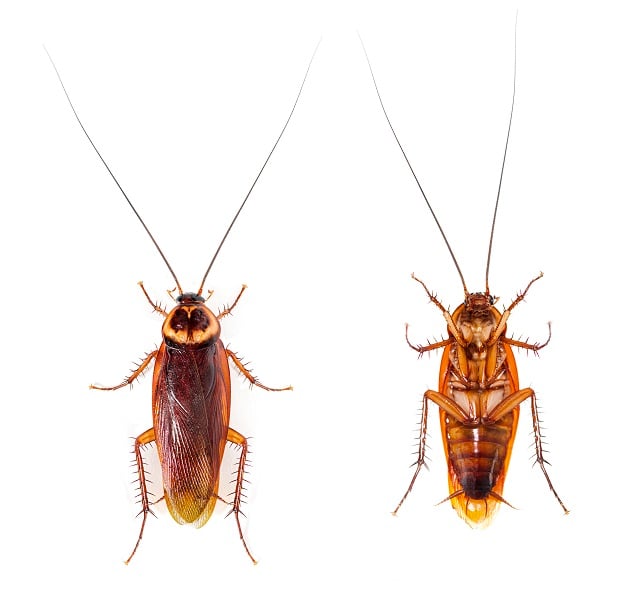
Cockroaches are very common tiny brown house bugs with long antennae, oval, slender bodies, and six legs. The average length of domestic roaches is 15 mm. The bigger roaches, called Periplaneta americana, have wings and can grow as big as 75mm.
These bugs are typically found in furniture, cabinets, kitchens and other dark places. They also like to nest near food sources, under stoves, fridges and moist areas like crawl spaces. Cockroaches are likely to come out when the lights are off and swiftly flee the lights.
Cockroach infiltrations happen mostly during shifting from one place to another when the property is left vacant for a number of days. They can even enter your home in used pieces of furniture, shopping bags, and pipes or enter your home through vents and drains.
Cockroaches love wet, warm, and dark environments. Their infestation must be eliminated because they can cause serious illnesses and diseases by contamination of food, water, and utensils.
How to get rid of cockroaches
- Glue traps to identify the areas of infestation.
- Set up bait stations.
- Seal all the entry points.
- Liquid concentrate to the rescue.
Carpet Beetles (Anthrenus verbasci)

Carpet beetles are also a very common species of household bugs. They are oval in shape and can grow up to 1.7 – 3.5mm. They have a dark erratic brown and yellowish color. They even have wings and can come into your house by flying.
Carpet beetles are harmless most of the time, however, their larvae can cause big problems. A single carpet beetle is capable of laying up to 90 eggs in its 4 to 8-week-long lifespan.
The fuzzy carpet beetle larvae feed on materials like wood and fabric. They can leave small holes in your furnishing by devouring your clothes, rugs, and carpets.
To identify these bugs, look for tiny yellowish-white bugs flying around lighting or crawling on the walls of your home. These tiny beetles also shed skin that can be recognized to identify the infestation.
How to get rid of Carpet Beetles
- Clean your rugs and other furnishings regularly and thoroughly.
- Do thorough vacuuming of the rugs.
- Get your furnishings professionally dry-cleaned often.
Spiders (Araneae)
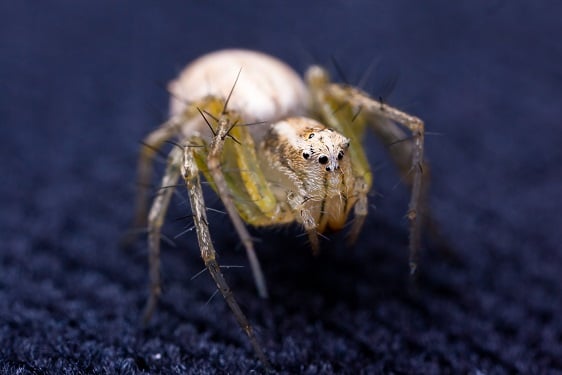
Everyone is aware of the notorious eight-legged monster beast bugs called spiders. They are also the most hated bugs in the world (at least that’s what we think).
They have eight spindly legs, a spherical body, and no antenna, which makes them easily recognizable (and scary of course). They can grow up to 20mm in length.
Some of the spiders can even have furry bodies, which sounds cute, but it really isn’t. Since spiders come in deadly variants, it is crucial to identify them. The black widow and the brown recluse spiders are two very dangerous spider species.
The brown recluse can be recognized by the violin-shaped marks on the front of its body. Black widow spiders can be identified by red patterns on black and glossy bodies.
The majority of small black spiders, nevertheless, are not thought of as bothersome creatures. Common spiders are quite useful because they eat flies that could harm your plants.
How to get rid of spiders
- Set up spider traps.
- Remove webs from all surfaces.
- Use peppermint oil and vinegar to keep the spiders away.
- Install screenings.
- Use insecticide.
Houseflies (Musca domestica)

Houseflies, similar to fruit flies, are the most common flying bugs and can be found in almost every house. They can be as long as 4 mm to 7.5 mm in length and have a dark gray body, transparent wings, six legs, and huge compound eyes.
House flies don’t bite, but they can spread diseases by eating trash, pet food, and human waste and then contaminating your food by sitting and flying.
To stop them from spreading bacteria, you should destroy any of these tiny black flies you find inside your home. Clean up after your waste, shut the trash bins, and clean out any nasty objects in your house to stop house fly infestation.
You must get rid of the larvae to get rid of the flies. Houseflies can be identified by their small, dark gray body, huge round eyes, and propensity to buzz or flutter erratically around windows or light sources.
How to get rid of Houseflies
- Use Herbs and flowers.
- A mixture of vinegar and dish soap can help you entrap flies.
- Get a venus flytrap.
- Natural trap bait.
Weevils (Curculionoidea)

Weevils are thin common house tiny black bugs that can readily infest food in your pantry that aren’t sealed. Weevils are tiny, black beetles that have a long, unique snout and a body that resembles a pear.
These little black house bugs can grow to a length of 6mm. Even though they are nonvenomous, they can still contaminate food and water.
You can find these bugs hanging around your house, creeping on walls and window sills. You can generally just vacuum away these bugs if they become too bothersome.
But if you find a bunch of thin black bugs in your house, you need to clean your kitchen thoroughly and look for black bugs in all unsealed food products like cereals. Also, airtight containers may be a good option to save substantial food items.
Weevils are recognized by their glossy, oval, black body, large snout, and long antennae.
How to get rid of Weevils
- Wipe kitchen shelves with soapy and hot water.
- Use the disinfectant spray and wipe the surface with vinegar.
- Clean your kitchen thoroughly and do it often.
- Throw unsealed food away.
Centipedes
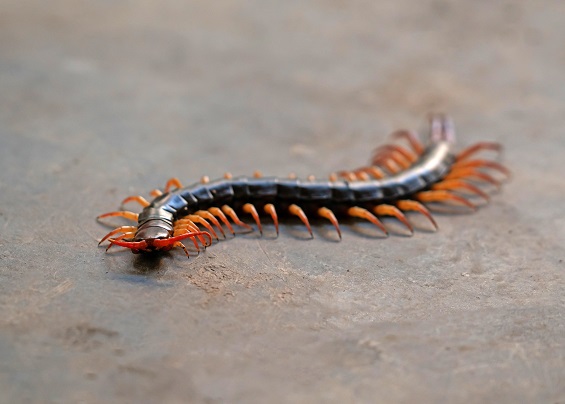
Anyone who has ever seen a centipede knows it is the creepiest thing to crawl our planet. It is identifiable by the number of legs it has and let us tell you, it’s A LOT. They also have two long antennae and two tails.
Centipede rarely bites, however, if they do, the pain can range anywhere from hardly perceptible to excruciating.
The length of a centipede can range from 10mm to 30 cm. Centipedes are usually found in isolated, dark places and they mostly emerge when it’s dark.
In residencies with mixture issues, centipedes are typical. They might be discovered in moist basements, bathrooms, or under sinks.
These lengthy, multi-legged bugs are less of an infestation and more of a terrifying insect to humans.
They are identified by the multiple pairs of legs that run the length of the centipede. They have slender bodies and can be recognized in an instant. Some centipedes can even have up to 117 pairs of legs.
How to get rid of centipedes
- Use an exterminator to kill them.
- Get rid of it by killing it using an object.
- Vacuum it and dispose of it at a suitable location.
Stink bugs (Halyomorpha halys)
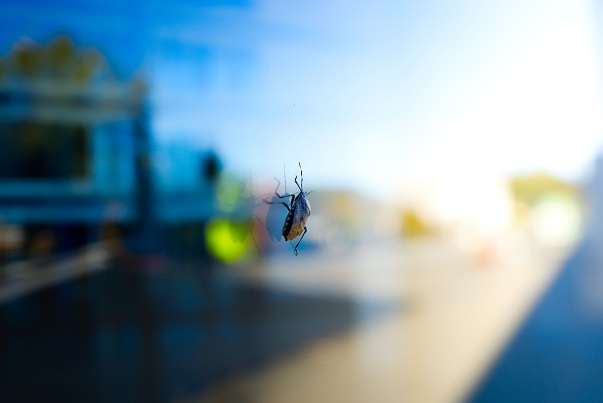
Brown insects have flat shield-shaped bodies. Stink bugs have two straight antennae and a brown body with brown mottling band designs on their front wings.
This little brown insect can be as long as 1.7 cm in length and 1.5 cm in width. Additionally, they give us a distinctively bad smell, especially when crushed.
These shield-shaped insects are generally safe for people to handle. The bugs overwinter in the attic and crawl the house after entering. They can enter homes through openings in the window or doors during fall.
In the spring, their foul stench becomes the most overt, causing the bugs to be more active than ever altogether.
The stink bugs have six legs, two dark antennae with white markings, and a unique marble-like patterning on their bodies. But the shield-shaped body is what makes the stink bug so distinctively different.
How to get rid of Stink bugs
- Seal off all the possible entry points on windows and doors.
- Reduces moisture-containing sites.
- Eliminate all sources of food the bug might be feeding on.
- Use essential oils to scare away insects.
Silverfish (Lepisma saccharina)

A wingless, grayish-silver beetle with long antennae known as a silverfish critters over the undersides of houses in moist areas.
The term “silverfish” is accurate in the description of this pest. The bug moves fast across the floor with fish-like fin-lie movements and a silvery look.
The length of the silverfish can range from 12-25 mm. Anywhere in wet attics, baths, and showers, silverfish can be a frequently happening infestation.
This can be easily identified because of the silver color and a tapering end. The two antennae and the tail make it easily recognizable as a fish-like monument.
How to get rid of Silverfish
- Borax is a quick way to put an end to the life of a silverfish.
- Use sticky traps to capture the silverfish.
- Carefully put out silverfish poisoning.
Bed bugs (Cimex)
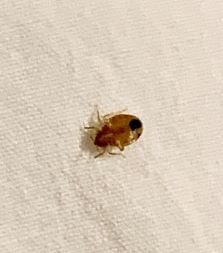
Bed bugs are tiny reddish-brown insects and can be as small as a seed of an apple. They have flattened bodies and can have a length of up to 4-5 mm. They even resemble the appearance of a tick, termites, or fleas.
Bed bug bites on humans can cause severe itching and rash on the neck, hands, feet, or face.
These mite infestations are the most difficult to get rid of, as they can go on for about 2 months without eating.
They can be identified easily on beds and mattresses as small bugs with flattened oval bodies and tiny heads.
How to get rid of bed bugs
- Vacuum your room with a HEPA filter.
- Dry your clothes on high heat in your dryer
- Deep clean your mattresses and wash all fabrics and linens.
Time To Throw The Little Buggers Out Of Your House
Tiny house bugs can not only be terrifying, but can cause ultimate damage to your furniture, and your health.
These bugs can be identified easily and can be taken out of the root for the betterment of your home. Remember to take all the necessary steps and extra precautions to keep your house away from all the mess of the pest.
Also, if you’re designing a tiny home – consider designing it with bug prevention techniques in-mind, so that you solve the problem before it becomes one.
Finally, keep your house, clothes, mattress, and carpets as deeply cleaned as possible. Thank you for reading! We hope this information was helpful.
FAQs – Tiny House Bugs
Why am I getting little bugs in my house?
Bugs have the same way of life as any other creature on this planet. Food sources, heat, and shelter. If all this is available in your house, they are likely to become unwanted guests. Cockroaches, carpet beetles, spiders, houseflies, and weevils are among some of the common bugs found inside houses.
How do I get rid of bugs in my tiny house?
Use an insecticide. It is the fastest way to get rid of bugs. However, to keep infestations as far as possible, get a pest control company a minimum of 4 times a year.
Also, keep your house clean, and your sinks and baths as dry as possible. Seal all possible crevices and openings on your windows and doors to keep them creepers away.
Does vinegar drive away bugs?
Vinegar, especially acetic acid, is a killer pest control tool. It can repel the most common nuisances and can even kill the weaker insects. It is all the more effective to use against spiders, mosquitoes, and ants.
What repels little bugs?
Peppermint, cedar, lavender oils, lemongrass, eucalyptus, and tea tree have the properties to act as a decent bug repellent. You can even combine two or more oils to make an anti-bug potion. Just mix water and oils at a 3:1 ratio, and you’re good to go.
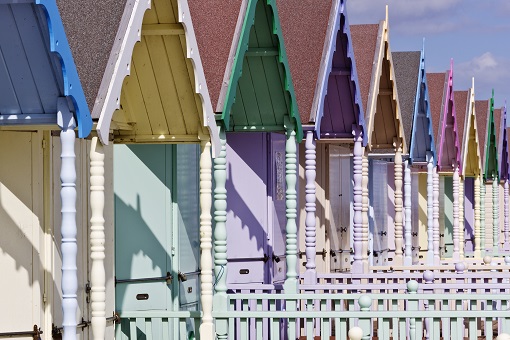
Tiny House Roofing – How To Strike A Balance Of Strength & Style?
Do you want to know what is the best tiny house roofing option?
After all, the number of options for a roof exceeds overwhelmingly. From style to material, the struggle to choose the right one is REAL.
While all styles and materials serve different purposes, we decided to find what are different options for roofing tiny houses. And which type of roof is perfect for your tiny house.
What Are The Most Common Types Of Roofing For Tiny Houses?
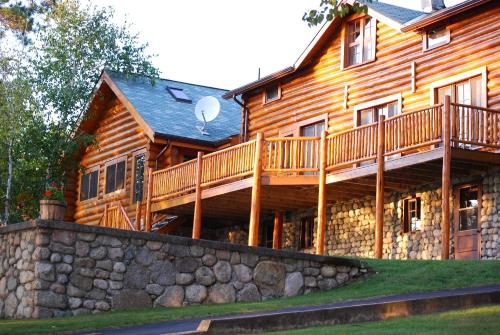
Your tiny house can have a variety of options for roof styles. You can choose a style purely for aesthetics, or something that provides a bit of purpose for your roof, like improved access to natural light. Additionally, consider the amount of headroom ad pitch that your loft bedroom will require.
Here are some of the most common roof styles for tiny houses:
1. Shed roof
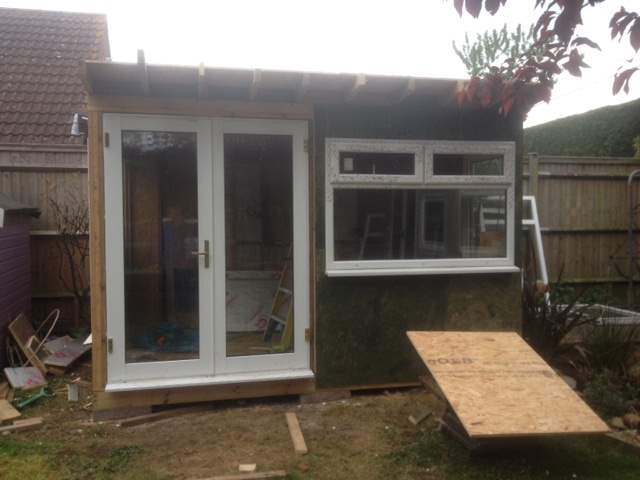
The shed is a single-pitched roof style that isn’t attached to another roof shell. it maximizes the vertical surface of the roof and can extend to a maximum legal road height of 13ft.
A shed roof has an easy installation and can be built with DIY kits. If you have an upper hand for handwork, this could be your next project.
What we like
- A great choice for a loft or attic area.
- Can provide a good source of natural lighting.
- Good for harvesting rainwater.
What we don’t like
- Hard to get rid of snow.
- A heavy metal roof is needed with a heavy pitch.
- You normally can’t build a massive house with a flat roof (flat roofs are indeed for tiny homes). This means smaller rooms, appliances and washroom.
2. Saltbox roof
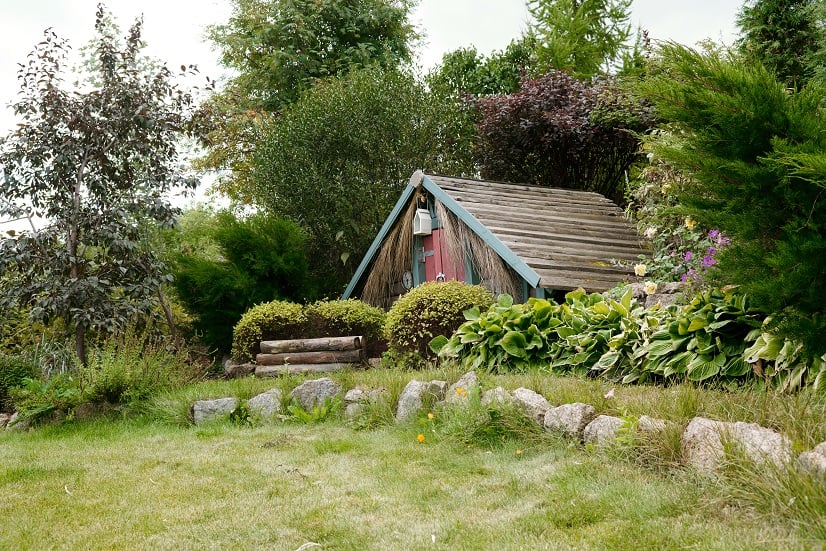
Saltbox roof has a similar concept to a shed roof. The focal difference is that the saltbox has two sides, one long and one short side.
A saltbox is a bit more complicated to install than a shed, so best to take help from a professional handyman.
What we like
- Smooth water runoff.
- Space can be made available for a skylight instead of a window.
What we don’t like
- The acentric middle can cause uneven distribution of weight.
- Fortified end walls and structural reinforcements are needed to anchor the roof.
3. Gambrel Roof or Barn Style Roof
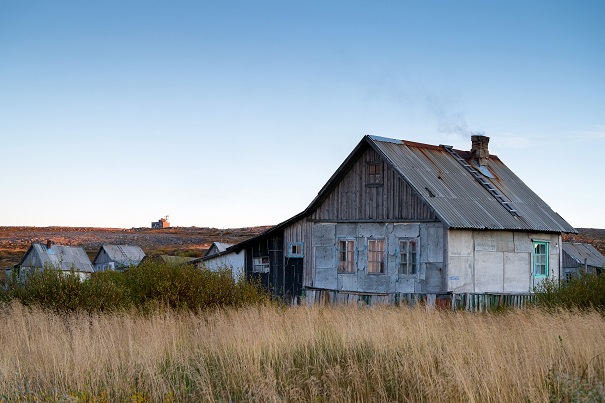
Gambrel is the most common roof style you see on most barns. It is also a common style of roof for tiny houses.
It has a centered middle and two symmetrical sides. Each side consists of one shallow slope and one steeper slope.
What we like
- It makes a strong and solid structure.
- Leaves room for a loft with more headroom.
What we don’t like
- It is very difficult and complicated for DIY projects.
- Every joint must be reinforced for utmost strength.
- A variety of materials are required to build.
4. Gable Roof
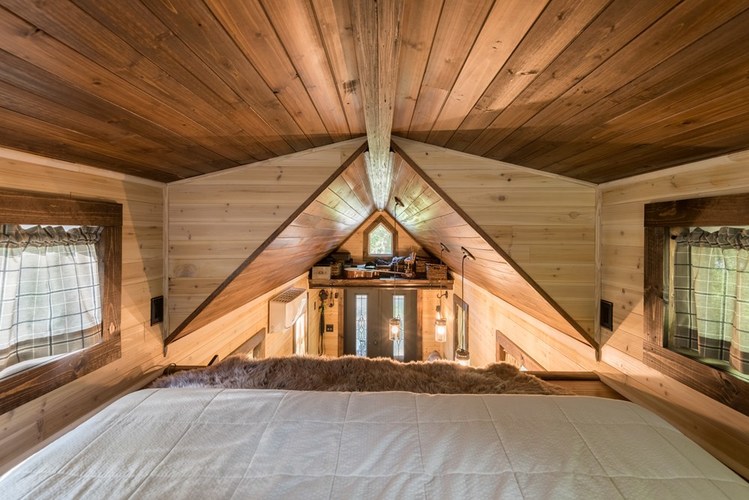
It is the most typical roof style for tiny houses and most traditional homes. It consists of two equally sloped sides connected in the middle making the perfect opposite “V” shape for a roof.
It is a simple roof style, and anyone with decent construction skills can make this.
What we like
- Weather resistant, meaning no worries about snow or heavy rainfall
- You can build it yourself without much problem
What we don’t like
- Doesn’t maximize space for a loft or attic.
- Needs reinforcements for the structure to increase its strength.
- Does not leave room for a loft (unless you multiple roof types like in the picture above)
5. Flat roof
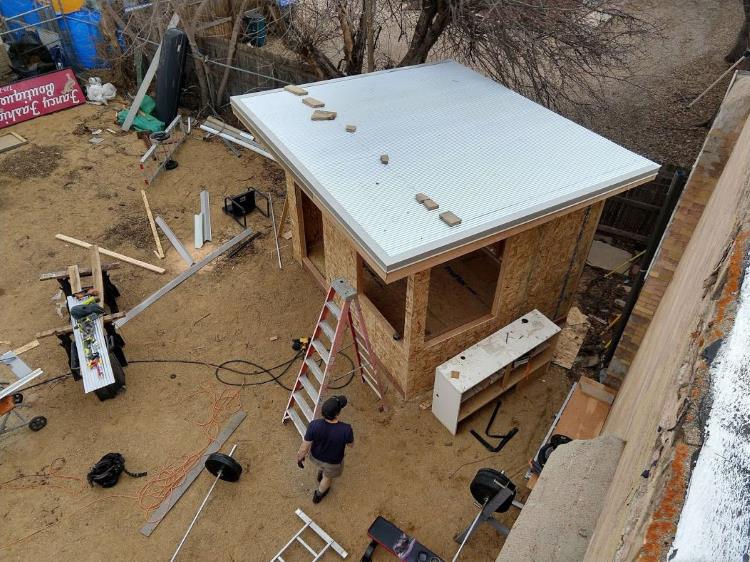
Just like the name, a flat roof is a completely flat surface without a pitch. It is a much more aesthetically pleasing roof style because of the straight clean surface.
It is easy to construct and can be constructed without any hassles.
What we like
- Provides a sleek and clean look for a roof.
- Easy to construct.
What we don’t like
- High maintenance potency. Can build debris and waste over a long time.
- It is not suitable for a choice of areas receiving heavy snowfall.
6. Arched or rounded roof

Arched is a common roof style used mostly for caravan wagons. It is a unique design that also possesses high strength and sturdiness.
The construction of an arched roof, however, is much more complicated and complex. It is always a good choice to hire a professional for this job.
What we like
- Strong and unique roof style.
- Weight is evenly distributed.
- Weather and water-resistant.
What we don’t like
- Construction is highly complicated.
- Is not suitable for a DIY project.
What Are The Best Roofing Materials For Tiny Houses?

Plenty of roofing materials are available in the market, but only a few are suitable for tiny houses. Most of these materials make too heavy of a structure for a tiny house.
The best materials for a tiny house are asphalt shingles, metal roofing panels, and ceramic tiles.
Asphalt Shingles (Average Cost: $100-$160 Per Square)
Asphalt shingles are a common type of material used in tiny house roof installations. Shingles are available in different materials, but asphalt is the most suitable for roofing in tiny houses.
Asphalt shingles are easy to install and come in a wide range of colors. They are a popular choice because of their durability to withstand minor weather changes.
If you are considering asphalt shingles, denote the weather conditions of your area. Asphalt shingles have the tendency to crack under extreme temperature changes.
Asphalt shingles are not recyclable and require a lot of energy to produce, hence, it’s not the greenest material for roofing.
Pros of installing Asphalt Shingle
- It is comparatively an inexpensive choice for roofing.
- It is suitable for different styles, as they come in different colors and textures.
- Installation is quite uncomplicated for asphalt shingles.
- Replacing asphalt shingles can also be done trouble-free.
Cons of installing Asphalt Shingles
- Asphalt shingles are susceptible to strong winds. Cheaper-quality shingles may crack and even detach in some cases.
- They are vulnerable to extreme weather changes and can fissure when exposed to extreme heat.
- They need to be installed in a warmer temperature.
- They are not as long-lasting as other materials.
Ceramic Tiles (Average Cost: $2 – $12 Per Square)
Ceramic tiles can provide an eccentric look to your tiny house. Ceramic tiles are made of clay, concrete, or terracotta, and are the most environment-friendly roofing material.
They have the tendency to be extremely long-lasting at the right temperature. Ceramic roofing can even withstand weather conditions such as hail, high winds, and even external fires.
Ceramic tiles are most preferred because of their low maintenance. They are also leak-proof, immune to rotting and damage caused by house bugs.
Pros of installing ceramic tiles
- Ceramic tiles are weather-resistant. They are most effective for hurricane-prone areas.
- They are eco-friendly and help in reducing energy costs.
- They need minimal maintenance and are highly durable.
- Ceramic tiles can last a lifetime in a constant climate.
- They come in contrast options from clay or concrete and different styles.
Cons of installing ceramic tiles
- Ceramic tiles are a very heavy roofing material and can cost twice as much as other materials.
- They are also complicated to install and require specialty flashings for correct installation.
- Even after being weather-resistant, ceramic tiles can be brittle and can still crack and break if impacted by heavy damage.
- These tiles are also gullible for algae growth. They need to be washed with rain algae prevention solutions to keep the tiles clean.
Metal Roofing (Average Cost: $80-$360 Per 100 Square Feet)
Metal roofing installations are exceptionally lightweight and long-lasting. It can resist water, snow, fire, mold, and bugs.
They are also relatively easy to install and come in a variety of options. Irrespective of the choices copper and aluminum remain the most popular choices because of their affordable cost.
Most of the steel installations are heavy-duty and rustproof and can survive heavy rain and hail storms. There are galvanized steel and galvalume steel installations available that can resist corrosion.
While galvalume steel roofing is more expensive, it can be a more persistent choice than galvanized roofs.
Pros of installing metal roofing
- The longevity of metal roofing can outgrow any other roofing material.
- It is more durable and easy to install.
- Metal roofings are also fire-resistant and can withstand wildfires and lightning strikes.
- They tend to reflect UV and infrared rays from the sun causing less surface heating and leading to a reduction in cooling costs.
- Most of the metal roofings are made from 10-30% recycled materials making it perfect for eco-friendly living. They are also fully recyclable at the end of their lifespan.
Cons of installing metal roofing
- Metal installations are not the most affordable choice of roofing.
- During rain or hail, they tend to create a lot of noise. So, Insulation may be required to solve this problem.
- Fixing metal roofing can be quite a challenge as the same color metal panels may not be available causing inconsistency in the color of the roof.
- Some metals can be poorly made and may have a thinner gauge. Some of them can even rust in certain climates and dent easily during hail.
How To Build A Tiny House Roofing System?
Let us be honest, installing your tiny home’s roof can be a no-easy task. In fact, it is actually quite complex and requires a number of steps.
Step 1: Prep The Roof With Underlayment
Before laying down the actual roof, you need to prep your roof with the use of tar paper. Tar paper is used to add a weather-resistant layer that protects your house from rain, moisture infiltration, and dirt.
You need to cover the entire surface of the roof sheathing, so measure and cut the tar paper according to that. The paper is then installed going from the bottom to the top of the roof pitch.
This chronology is important to ensure natural drainage as the layer seals the water from entering the house.
Step 2: Installation Of Drip Edge
A drip edge is a bent metal sheet that helps drive the water away from the roof. A drip edge is added at the bottom of the underlying for proper flow of water.
Step 3: Install The Roofing Panels
This is the process where you add the topmost layer of your roof. You must begin by adding the sealant on the drip edge.
Then you must lay your roofing panels by lining them up with the edge of the roof sheath. Let the roofing panel overhang by 2 inches to let the water drip away.
For fastening the bolts on the roof, always refer to the manufacturer’s illustrations on installations.
Repeat the aforementioned procedures until the entire roof is covered and securely connected, then overlap the rip panels at the edges.
Step 4: Install Gable Flashing Trims
Add gable flashing trims with a strong sealant for a 100% water-resistant roofing system. You might want to take help from your family or friends, as this part can be a bit tricky.
After that, install the outside closure trims and peak flashing. Then add the final screws and bolts, that hold everything together in place, and your roof is ready.
FAQs – Tiny House Roofing
What is the best material for the roof of a tiny house?
Without a second opinion, metal roping is the best type of tiny house roofing. There are plenty of reasons to support our statement.
Metal is fire-resistant, water-resistant, and weather-resistant and increases energy efficiency. Most metal roofs are everlasting and can outlive any other material roofing.
What is the cheapest material to replace a roof?
Asphalts shingles are the cheapest and the most cost-effective roofing material if want new replacement roof panels. Asphalt shingles come in three different variants which differ in quality and price.
What is the easiest roof to install?
Shed style is the easiest roof to install. It s one of the few roofings, homeowners can do themselves. A shed is a versatile roof style that can be particularly suited for many building structures including garages, barns, stables, and even tiny houses.
What is the best roof to prevent heat?
Terra-cotta ceramic tiles and metal roofing are two of the best roofing materials to prevent heat. Ceramic tiles can provide a layer of insulation and keep the heat from penetrating through the surface. While metal roofing can reflect UV and infrared rays responsible to increase heat. Hence, making it the most energy-effect material of all.
So, Which Roof Will Land On Your Head?
Remember, first consider the style of roof you want for your tiny house. Consider factors like wind resistance, fire resistance, headroom, and the kind of lighting you want.
After that choose the suitable material for your region and environment. If the area you live in experiences extreme temperature changes, avoid using asphalt shingles and ceramic tiles.
And, if you want an evergreen roof that will last for generations, consider getting a metal roof installed. This is it for small house roofing styles. Thank you for reading, we hope this information was helpful.
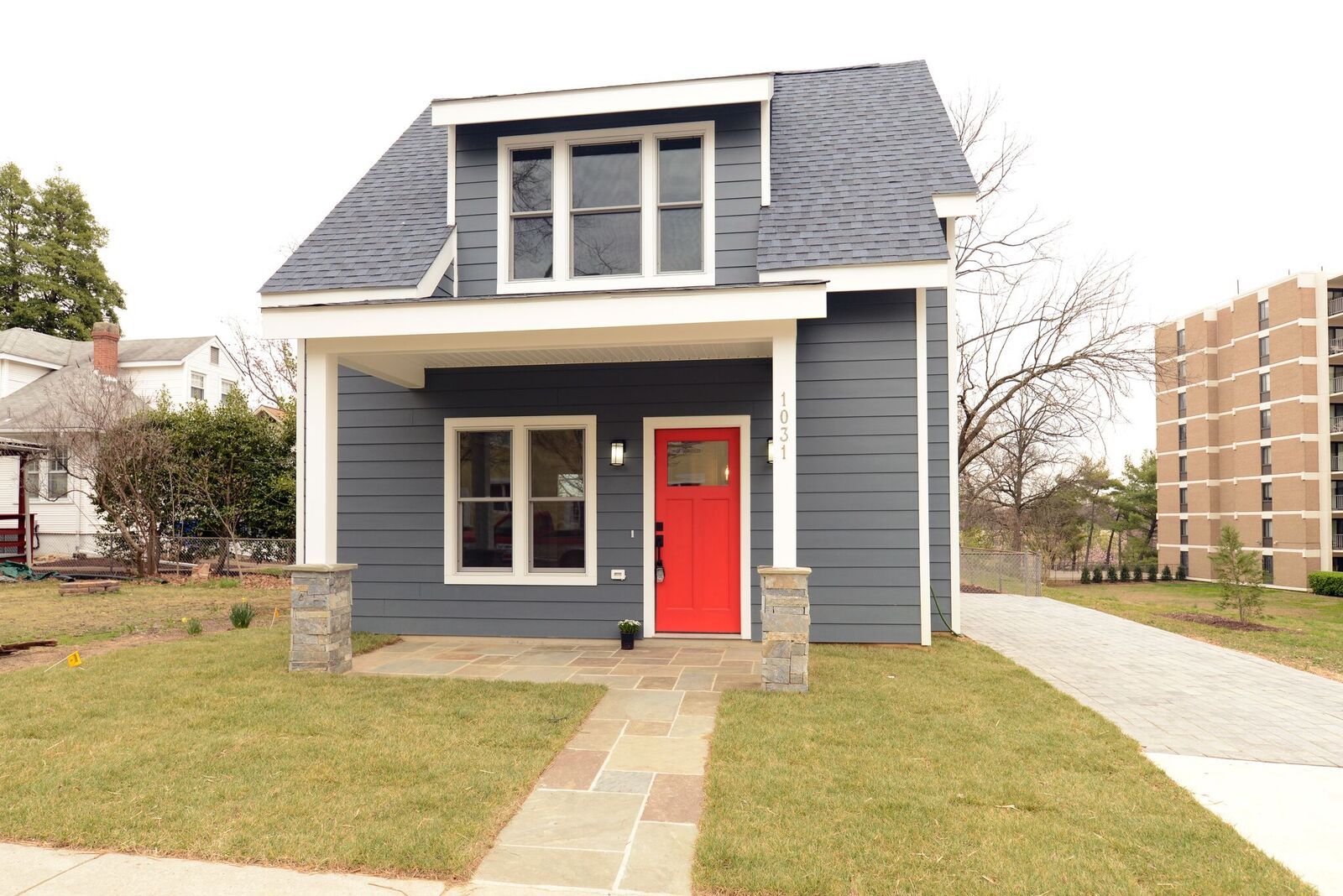
Finding Your Perfect Small-Family Home: Tips & Locations
Finding the perfect house for a small family can be a daunting task. With so many options to choose from, it can be difficult to know where to start.
There are so many things you need to know to make sure you choose the right home for your family. These include assessing your budget, evaluating the location, determining the number of bedrooms, kitchen amenities (fridges, stoves) and bathroom fixtures like a bathtub, standing shower and toilet. However, there are certain key points that you should consider when searching for your first family home.
In this blog post, we will explore six of these key points that will help you find the perfect house for your small family.
6 Key Points to Finding the Perfect House for Your Small Family
While there can be plenty of considerations while choosing the perfect home for a small family, we will narrow down the list with the following 6 key factors –
1) Define Your Non-Negotiables
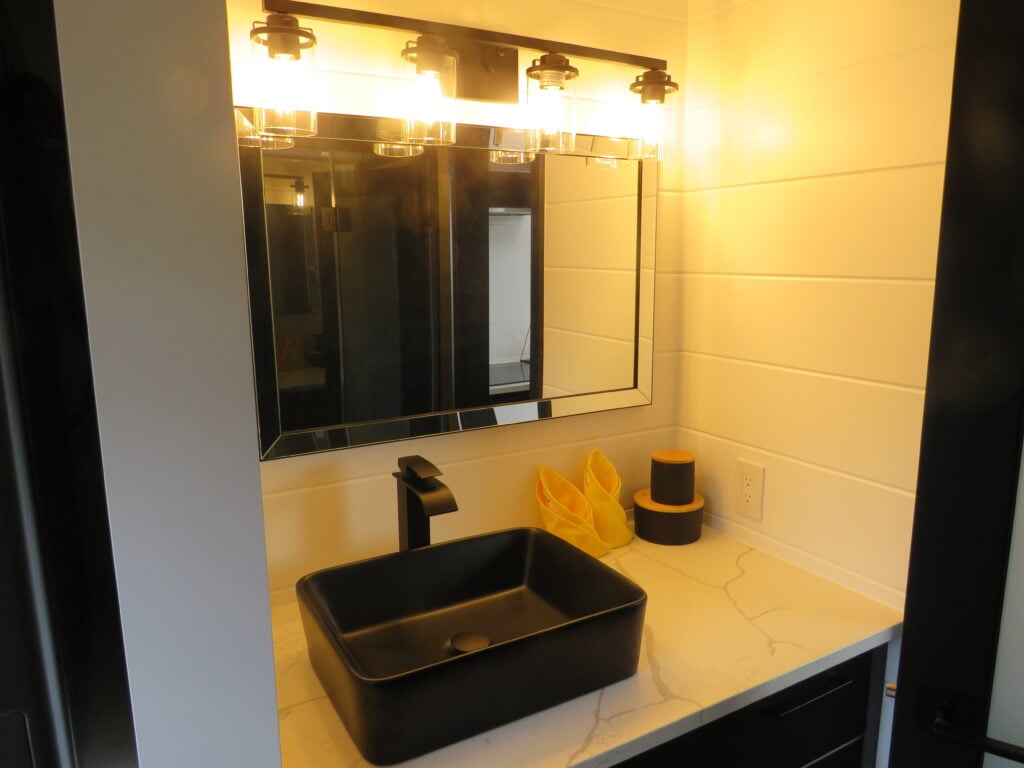
The first thing you need to consider is defining your non-negotiables. This entails creating a list of qualities or conveniences the house must have in order to be the ideal fit for your family. So, you should write down the essential features or any other “must-haves” that come to mind.
Perhaps, you can look at the following tips to determine the non-negotiables –
- Consider the needs of all family members.
- Prioritize the list by separating the obvious ones from the optional ones.
- Research different neighborhoods to determine your preferred house and community.
In Tennessee, Brentwood is a great area for families with its excellent schools, close proximity to the city, and ample entertainment options. Do an online search for “family homes in Brentwood” to get an idea of what is available.
2) Determine What You Can Afford
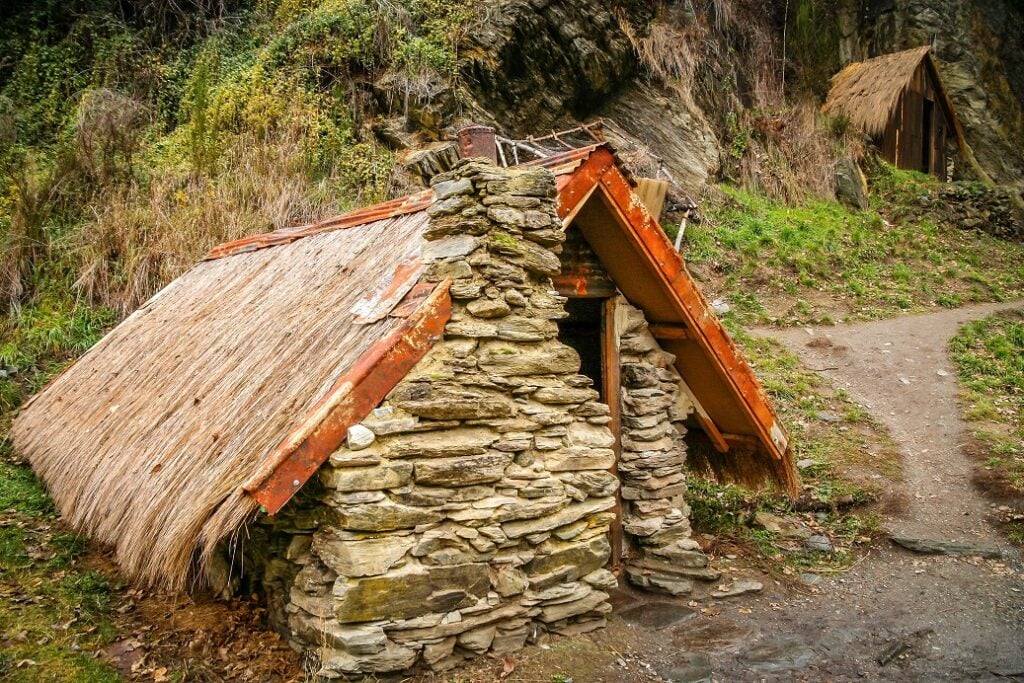
First, understand what you can afford before going on the hunt for your first family home. Although you may have dreams and aspirations about the house, ultimately the decision will depend on your budget.
To help you stay within your means and find the perfect home for your family, here are some tips –
- Before you start looking at houses, determine how much you can comfortably spend on a home.
- Request pre-approval for a loan to determine the type of loan you qualify for and how much you can borrow.
- Consider different types of loans, such as FHA loans or USDA loans.
From analytics, we found that the median household income in Detroit, Michigan, is around $30,894. With that said, the average home price in that area is around $64,174. Therefore, Detroit can be an affordable place to stay. If you’re looking for properties, click here to find out where you can buy them!
3) Consider the Location
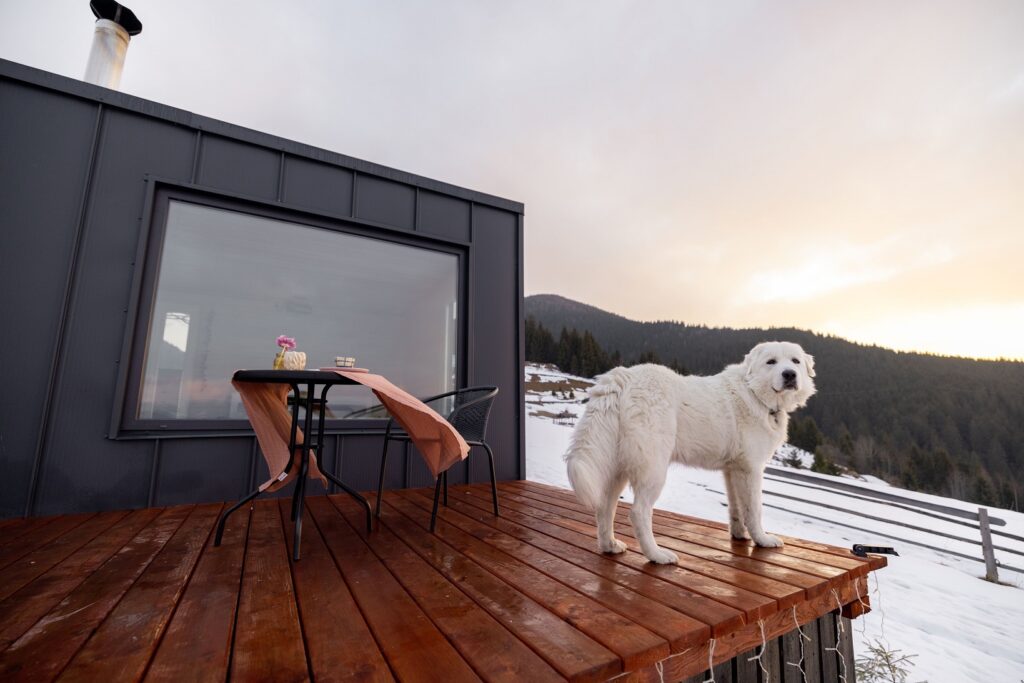
Location is always important when searching for the perfect family home. That is when factors like proximity to schools, public transportation, work, entertainment venues, etc. should be considered.
Traffic and commuting times can be major factors in choosing the best location for your family. You should consider looking at commute times, like how long will it take you to get to work, school, or run errands? Make sure to use online maps and traffic monitoring services to get an accurate idea of commute times in the area you are considering.
In addition, consider the environment of the area. Is it safe? Does it have good air quality? Are there parks or other outdoor recreational activities nearby? Making sure the environment is suitable for your family when finding the perfect home.
4) Size Does Matter
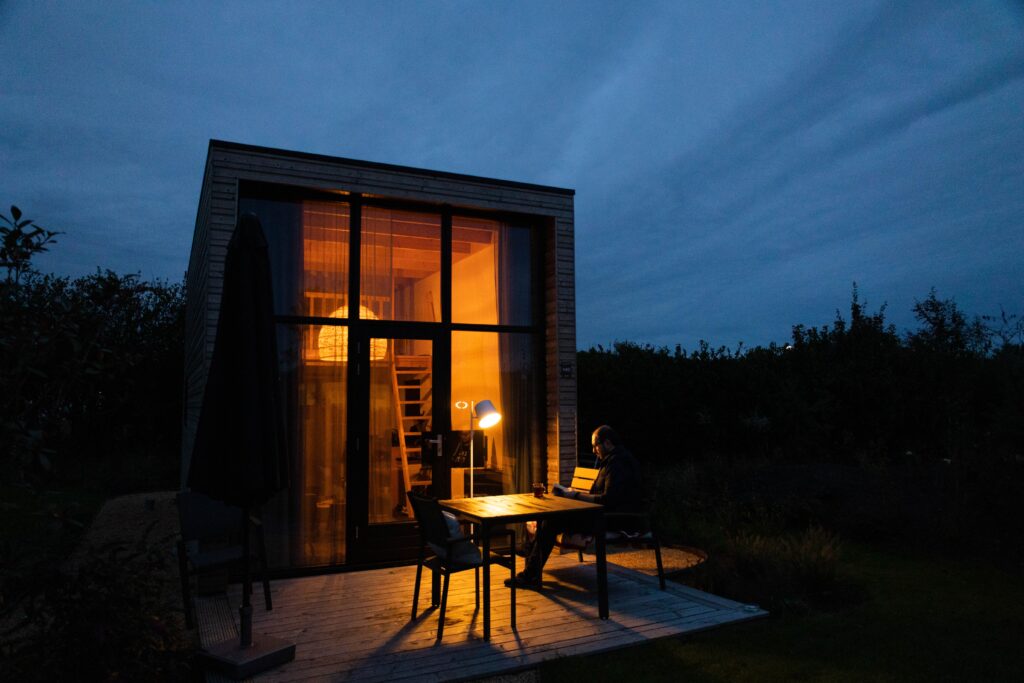
Yes, size does matter when you are looking for the perfect family home. You want to make sure your home has enough room for every family member. At the same time, there is additional space when your family grows.
Here are some tips when you are considering the size of the house –
- Look at the floor plans to determine if the size is suitable for you or not.
- Measure the length and width of the room individually. After that, multiply them to find the total area.
- You can reduce the size of the furniture to fit the compact living space. You can take a look at the Harbor Cottage in Maine. Aside from the furniture, the cottage even downsized the woodstove to make the room larger.
- Don’t forget to consider the number of bedrooms and bathrooms.
- Although it is not mandatory, you can measure the yard to see if it can accommodate any additional outdoor activities.
5) Think About the Future
Take into account the long-term plans for your family and any potential changes that may arise. Consider whether you want a single-family dwelling, a townhome, a condo, or something else. Think about what kind of lifestyle you want in the future, how many bedrooms and bathrooms you need, and the overall size of the property.
Furthermore, think about the surrounding amenities, such as schools, parks, restaurants, grocery stores, public transportation, and other options. Additionally, make sure to research any restrictions for homeowner’s associations in the area. If you carefully research your future needs, it won’t be hard to find the perfect small-family home.
6) Get Professional Help
The process of finding the perfect family home can be overwhelming, so you may consider professional help. A real estate agent can provide valuable insight into the current market and tips to find the perfect house.
Let’s talk about Jade Mills, who runs Jade Mills Estates. She became the number one real estate agent globally for Coldwell Banker in 2019. You should consult with such a real estate agent to find the best deals.
Real estate agents are familiar with the particular area. They know what is available and know the local market conditions. With their expertise and resources, they can be a great asset in finding the perfect home for your family.
Finding the perfect family home is no small feat. It requires a lot of thought, research, and decision-making. Make sure to consider all the key points that we have discussed in this blog. Looking for a perfect small family home? Winter Garden, Florida has a range of stunning condos available to buy from eXp. Check out their website for more information.
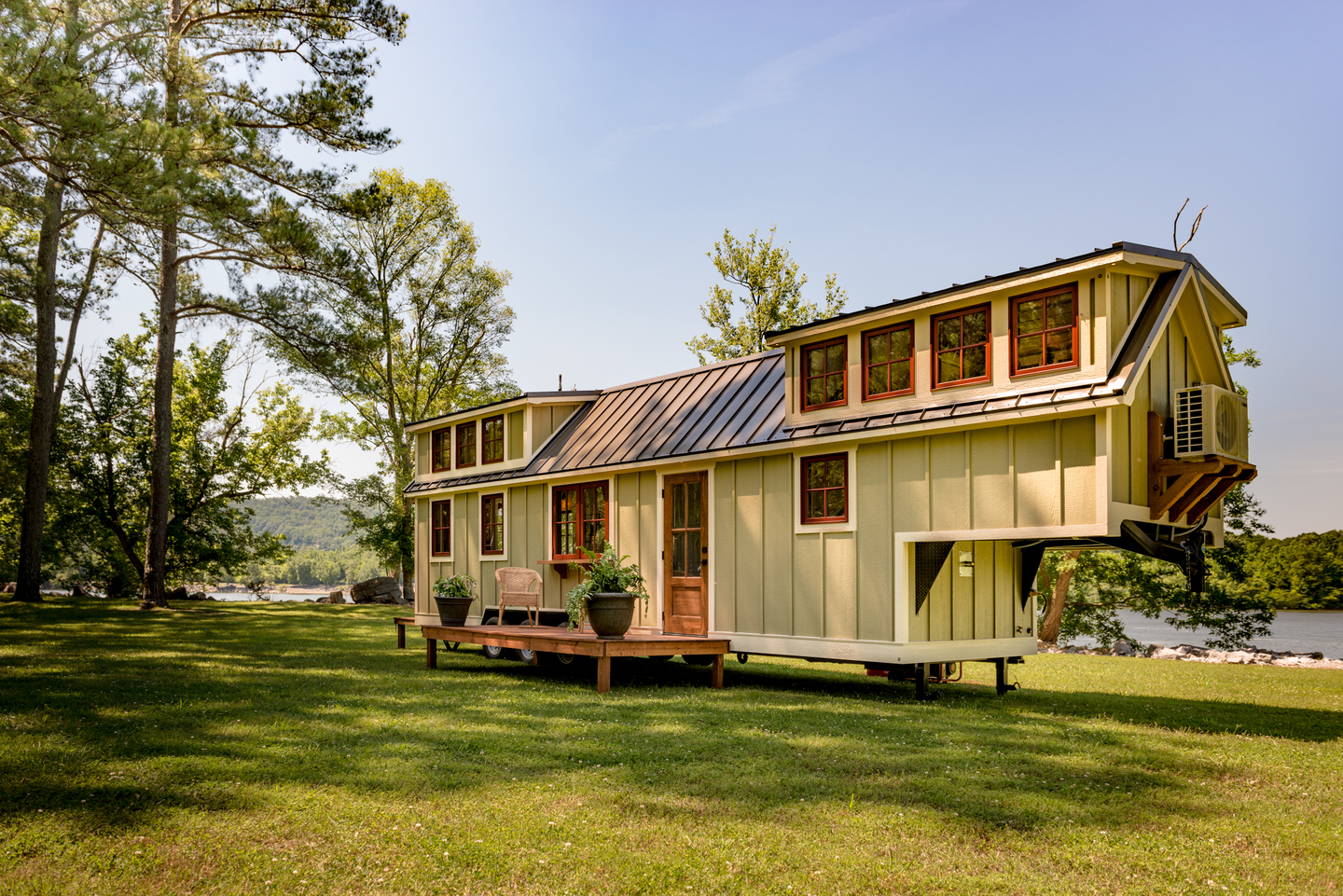
5 Tips for Turning Your Tiny House Dreams Into Reality
Tiny houses are becoming increasingly popular for those who want to downsize and live a minimalist lifestyle. It’s an attractive option for those who want to save money and live more sustainably. But before you make the jump, there are a few things to consider. Given its size and unique design, working with the best builder to ensure your tiny house meets all your needs and expectations is essential.
If you’re planning to build a tiny house, this guide will walk you through the top tips for turning your dreams into reality, some considerations to keep in mind, and what to expect during the building process.
5 Tips for Building a Tiny House
Building a tiny house is more complex than you might think. It’s more than just finding the right builder and setting your budget—there are a few other vital things to keep in mind along the way. Here are five tips for getting started:
Research Local Building Regulations

The laws governing tiny house construction can vary from state to state. For instance, building a tiny house in the U.S. differs from building in Australia, so it’s essential to research the local regulations and obtain any permits you may need.
In the U.S., for example, you may need to apply for a building permit if your tiny house will be used as a permanent dwelling. It is stated in the International Residential Code that a tiny house must be no less than 400 square feet to qualify as a permanent dwelling. Therefore, it may be beneficial to have a 2 room floorplan, as this is a particularly popular tiny home size.
Meanwhile, in Australia, no rules from the Building Code of Australia (BCA) expressly apply to tiny homes. The regulations for caravans frequently apply to tiny residences because they are typically on wheels.
A tiny house is often excluded from BCA regulations if constructed as a transportable residence. However, the BCA, State, and council requirements must be followed if you’re constructing a tiny house that will be a fixed, permanent residence.
You need to be fully devoted to tiny house construction to make the time and financial investment worthwhile because achieving this is as costly and time-consuming as a standard house building.
Thus, if you plan to build your tiny dream house in Sydney, you should contact the relevant government bodies and inform them of your plans. According to award winning builders in Sydney, this will ensure that you don’t run into any legal issues down the line.
It’s always best to deal with potential issues early on before things get too far down the track. So make sure to do your due diligence and research local regulations well.
Choose the Right Builder
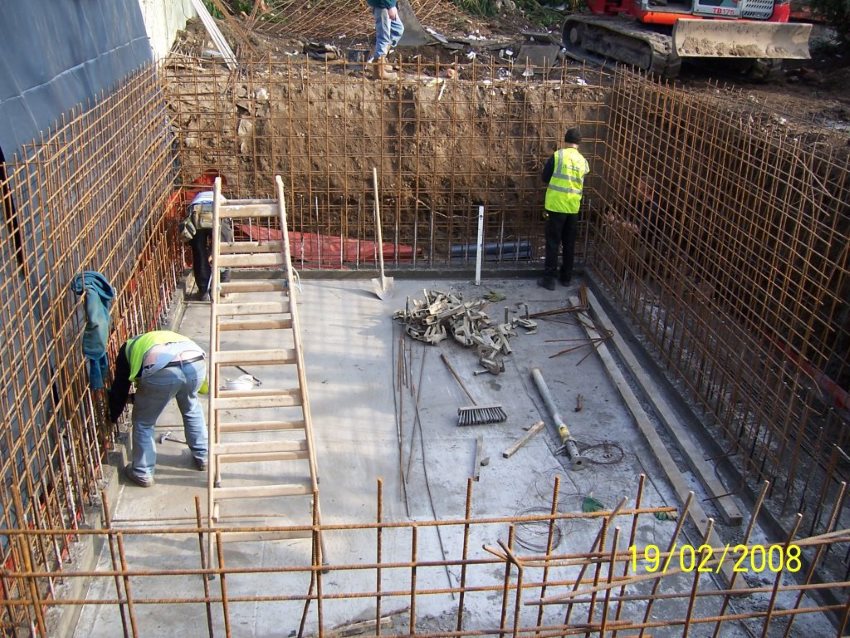
This is perhaps the most essential step in building a tiny house. You must choose a reliable, experienced builder who has built similar homes. The right builder can make all the difference between a successful build and one that ends in disaster. So make sure to do your research and ask around for recommendations.
Some builders will also offer customized plans and designs, so it’s worth looking into this option if you’re keen to have a truly unique house. You want to avoid ending up with a generic design that looks just like everyone else’s tiny house.
Plan Carefully
A tiny house is a significant investment of time and money, so it’s essential to plan carefully before starting the building process. Take stock of your needs and wants, identify potential obstacles, and work out a realistic budget. It’s also important to consider the size, layout, materials, and amenities you want in your tiny house.
Once you have all these details sorted, it’s time to find a builder and get the ball rolling. Make sure to fully brief them on the design requirements so they can plan accordingly. That way, you can rest assured knowing that your tiny dream house is in good hands.
Know Your Needs
When you’re building a tiny house, it’s essential to understand precisely what your needs are. Think about how many people will stay in the house, how much storage space you need, and if you plan on using any special amenities such as a compost toilet or solar panels. All these details will help your builder create a home tailored to your needs.
You should also consider how much mobility you want—will the tiny house be on wheels, or will it be a stationary structure? Consider what foundation or base you need, and make sure the builder considers this.
Stay Open to Changes
Construction is an unpredictable process, and staying open to changes is essential. A good builder should be able to work with you on any unforeseeable issue or change that may arise during the project. Flexibility is essential, so expect the unexpected and be prepared to make adjustments accordingly.
Building a tiny house is an exciting project but can also be daunting if you’re not fully prepared. Thus, instead of jumping in head first, take your time and ensure you’ve covered all the bases. With little research, planning, and patience, you can build the tiny house of your dreams with minimal stress.
5 Considerations Before Building a Tiny House
Building a tiny house requires careful planning and preparation, like any significant project. Here are five key considerations that you should keep in mind before starting the build:
Lifestyle Needs
One of the biggest mistakes tiny house owners make is planning for a lifestyle that doesn’t suit their needs. Before you start building, consider your lifestyle and how it will impact the design of your house. It could be anything from storage capacity to amenities such as compost toilets or solar panels.
If you’re unsure, speak to other tiny house owners and see what works for them. Understanding your needs will help you make more informed decisions during the build. That way, your tiny house will be designed to suit you perfectly.
Legal Requirements
It’s important to check local building regulations and zoning requirements before constructing a tiny house. There may be restrictions on the size of the structure or where it can be located that could impact your build. Ensure you fully understand these regulations, so you don’t run into any issues.
It’s also worth speaking to your local council and seeing if they have any specific requirements for tiny houses. It is especially important if you plan on parking the house in a public place like a campsite or caravan park.
Design Options
There are so many different design options when it comes to building a tiny house. The possibilities are endless, from basic cabins to luxurious mansions on wheels. Think about what kind of design you’re looking for and research different options until you find one that suits your needs.
Look into wood, steel, or aluminum materials, and consider how they might work with the overall design. You should also explore different building methods, such as stick frame construction or modular builds.
Safety Requirements
Building a safe home is paramount, so ensure all safety requirements are met before constructing. Research building codes, safety regulations in your area, and fire retardants or other materials that could help protect the house from damage.
It’s also important to consider energy efficiency, ventilation, and insulation when designing your tiny home. These will all have an impact on the comfort of the occupants.
Foundation and Mobility
The foundation of your tiny house is one of the essential elements, so you need to consider this carefully. If you plan on moving house around, make sure that it is designed to be easily transported. On the other hand, if you want a semi-permanent setup, you may want to look into foundations such as concrete or steel.
Your builder should be able to advise you on the best options for your situation and how they will impact the construction. If you plan on moving house, then make sure you factor in any restrictions or towing requirements that may be applicable.
What to Expect In Building a Tiny House
Like any significant project, building a tiny house requires careful planning and preparation. But what can you expect once the build is underway?
Knowing what to expect on the journey can help you stay motivated and ensure that your tiny house dreams become a reality with minimal stress. Here are some things to expect during the building process:
Time
Building a tiny house can take anywhere from a few weeks to several months, depending on the size and complexity of the build. It’s essential to plan and be prepared for potential delays or schedule changes.
Costs
Tiny houses are generally much cheaper than traditional homes, but there are still costs associated with building one. You should budget for materials, labor, and any other indirect costs that may arise. Do your research and shop around to get the best deal.
Finishing Touches
Once you have finished the major construction work, it’s time to move on to the finishing touches. It includes things like painting, decorating, and installing fixtures or appliances. It’s also a good idea to consider security measures such as alarms or locks.
Challenges
Building a tiny house will bring its own set of challenges, but with the right planning and research, you can be prepared for anything. Make sure you stay organized, ask questions, and double-check facts to ensure your project is successful.
Process
Unlike a traditional building, constructing a tiny house can be relatively straightforward. In a traditional build, you would need to spend more time planning and laying foundations. While with a tiny house, you can often build the entire house in one go with minimal fuss.
Final Thoughts
When it comes to building a tiny house, the possibilities are almost endless. Think carefully about your design, budget, and safety requirements before constructing. With enough determination and an eye for detail, you can make your tiny house dreams a reality. Get ready to enjoy the benefits of tiny house living!